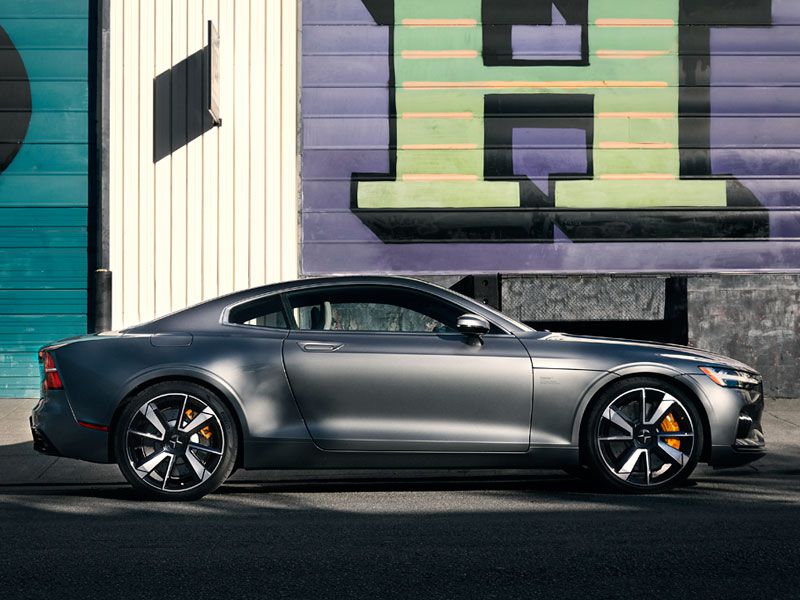Recent Articles
Popular Makes
Body Types
10 Things You Need to Know About the 2020 Polestar 1
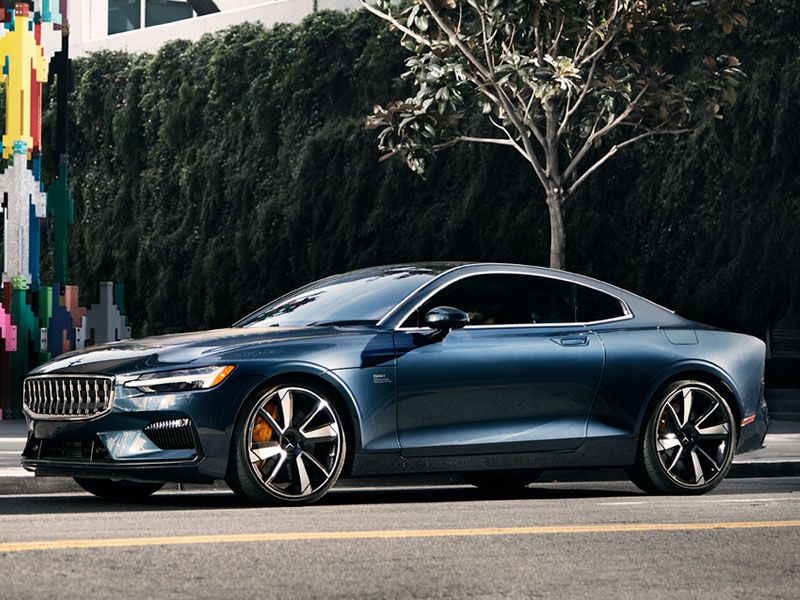
2020 Volvo Polestar1 exterior front angle ・ Photo by Volvo
The 2020 Polestar 1 is weird. In a good way. It’s a plug-in hybrid (PHEV) but it doesn’t make a big deal of its fuel economy. And it’s not a crossover/SUV, which is cause for rejoicing. It’s essentially a grand tourer, or GT, capable of long distances. That’s why it has an engine.
We’re saying there are 10 things you need to know about the 2020 Polestar 1, but the background is that Polestar was an independent tuning house specializing in Volvos before being brought under the corporate wing. Now, Polestar is reborn as a distinct marque with an emphasis on technology and sustainable personal transportation, set up in a new ultra-modern Chinese factory. The Polestar 1 demonstrates the company’s expertise. It’s a statement of intent.
1. It maintains a svelte figure.
There’s a lot of carbon fiber in the Polestar 1’s body, including reinforcement underneath. Carbon fiber is stronger than steel but a fraction of the weight. And weight is always the enemy, either in pursuit of fuel efficiency or performance.
Because the Polestar 1 is not an adaption of an existing car, it also means that some unavoidable weights can be placed where they’ll have the least effect, or perhaps even be beneficial.
For example, the battery packs are located under the floor, for a low center of gravity (great for handling) and between the rear wheels (great for helping with traction). The engine only has four cylinders and is therefore lighter than a V12, but the drivetrain’s output is comparable.
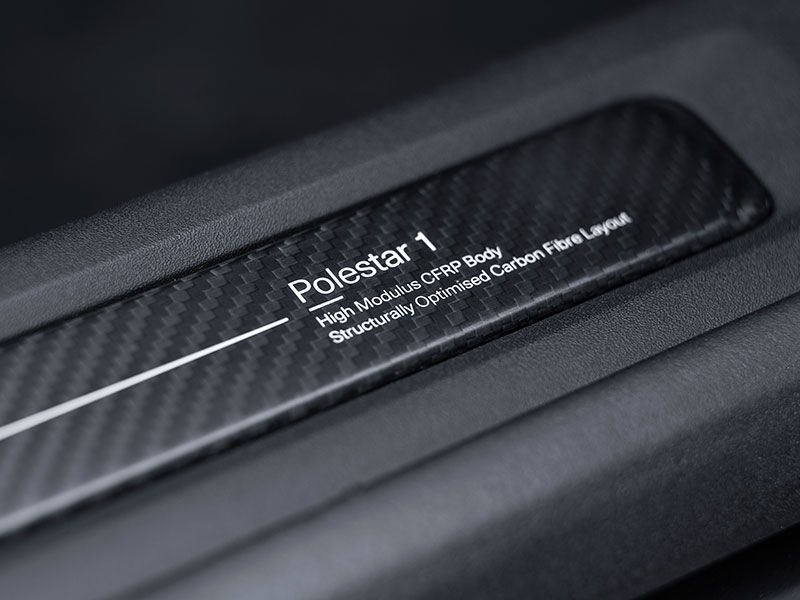
2. It's turbocharged — and supercharged.
Polestar’s Volvo connections have brought a 2.0-liter/4-cylinder engine that is both turbocharged and supercharged to send a remarkable 326 horsepower to the front wheels. An electric motor drives each rear wheel. The combined output is 619 hp and 738 lb-ft of torque.
Let’s put this into context. The twin-turbocharged 6.0-liter V12 in the Mercedes-AMG S 65 (the hottest coupe version of the S-Class) develops 621 hp and 738 lb-ft of torque. And averages around 16 mpg. It’s possible to zip around in the Polestar 1 without a care about consumption and still average 28.2 mpg.
Available drive modes are Hybrid (default), Pure (rear-wheel drive and battery power only), AWD (all-wheel drive), and Power (the sportiest setting).
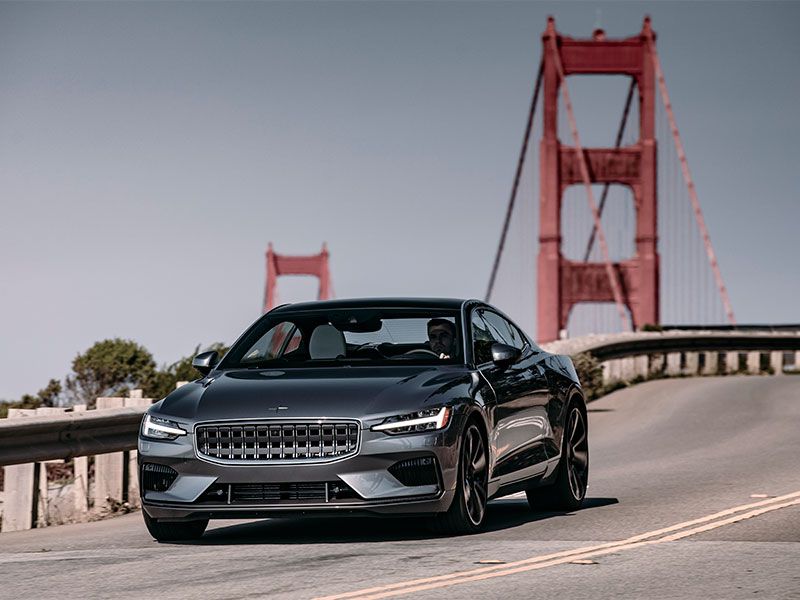
3. The lithium-ion battery cells are estimated to boost energy storage.
The Polestar 1 uses lithium-ion battery cells. They’re claimed to hold three times more energy than any battery put into a production Volvo. On a fast charger, it will take under an hour to reach 80 percent replenishment -- pretty much par for the course.
At the time of writing this piece, there were no estimates from the Environmental Protection Agency regarding energy consumption, but Polestar claims a maximum electric-only range of 70 miles. Many owners could use it solely as an EV when commuting. The car even has a sensor that monitors when the gasoline in the tank is getting old.
There’s also a cool visual element. Open the trunk to reveal a set of orange power cables behind a scratch-proof Plexiglass screen.
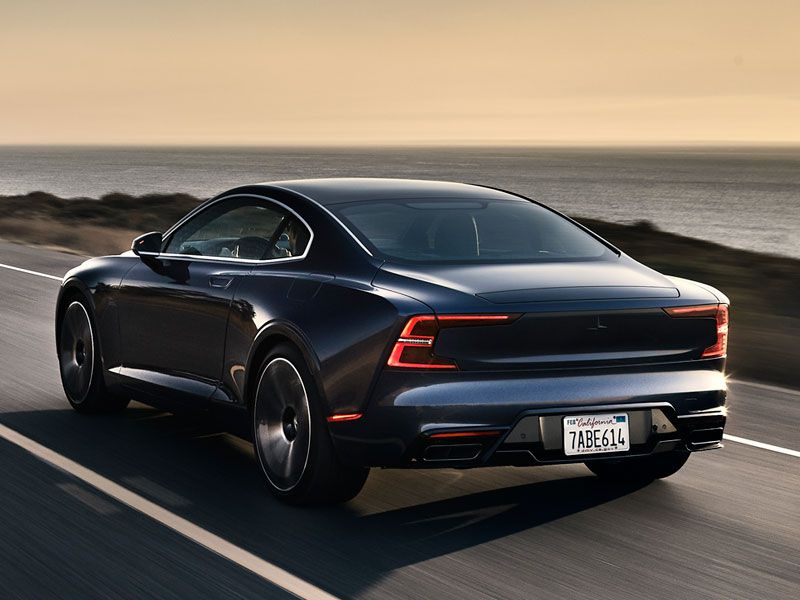
4. It might look like a Volvo, but it's a Polestar.
It’s hardly surprising that there’s a lot of Volvo in the Polestar 1’s styling. The man who created the second-generation XC90, Thomas Ingenlath, also brought this car to life. Note the shape of the LED daytime running lights, known as “Thor’s Hammer” on Volvo vehicles. That’s not a criticism. Volvo’s current output is arguably handsome and the XC90 set the tone.
The good thing is that the carbon fiber-intensive build allowed Polestar to use some pleasing shapes and include touches like the “invisible” hood thanks to precise shut lines.
A strong Volvo influence also pervades in the cabin, including the shapes of the dashboard (though made from carbon fiber), the upright orientation of the touchscreen, the vents and the fonts.
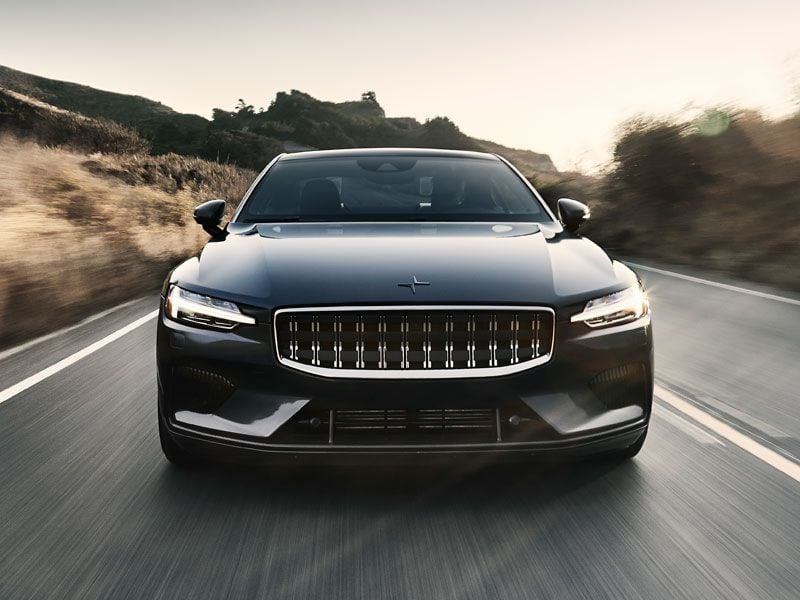
5. It's quick.
Performance numbers are pretty good: standstill to 60 mph in 4.2 seconds. Top speed is limited to 155 mph, nothing out of the ordinary. However, the way the Polestar 1’s muscle is delivered makes the experience exceptional.
If we planted the throttle of a V12-powered car, there would be a barking exhaust note as we’re thrown forward. It could be described as brutally fast. By contrast, the Polestar P1 is beautifully fast.
Acceleration is completely linear: no pauses, pushes or plateaus. And more or less silent. There’s still a strong element of: “I can’t believe I’m going this fast, this soon” but never has 619 hp and 738 lb-ft of torque felt so controllable and containable.
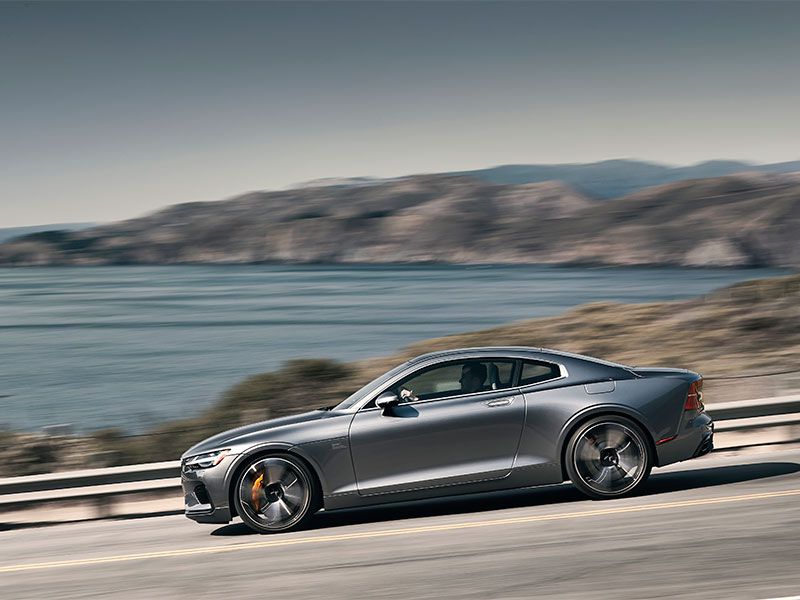
Photo by Volvo
6. It drives like a much smaller car.
One of the 10 things you need to know about the 2020 Polestar 1 is that it can shrink. Not actually reduce in size, but it has an uncanny ability to behave like a smaller car.
On a stretch of freeway, the Polestar 1 demonstrates its grand touring talents. It’s comfortable, quick to respond and mostly quiet except for the notoriously noisy concrete stretches.
On a tight, snaking road, it’s something else. The balance, low center of gravity and complete composure make the Polestar 1 seem like a super-powered Mazda MX-5 Miata only with a fixed roof. That’s how agile it can be. The tires are Pirelli P Zero, as found on many performance cars, although this set was developed especially for the Polestar 1.

7. Öhlins shock absorbers elevate the suspension.
One big contributing factor to the Polestar 1’s superb suspension was the decision to use Öhlins shock absorbers. This Swedish company is not a household name, except for households full of racing fans. But it’s a highly respected manufacturer of fine chassis components.
The setup here is adjustable manually. A rotary control is at the top of each unit. So even though this is an expensive luxury car, there’s no adaptive suspension controlled from the cabin (which would add weight).
It’s no big deal. Polestar has found what it reckons are the ideal settings and there’s no reason to dispute this. But if an owner really wanted to go more comfortable or more sporty, the opportunity is there.
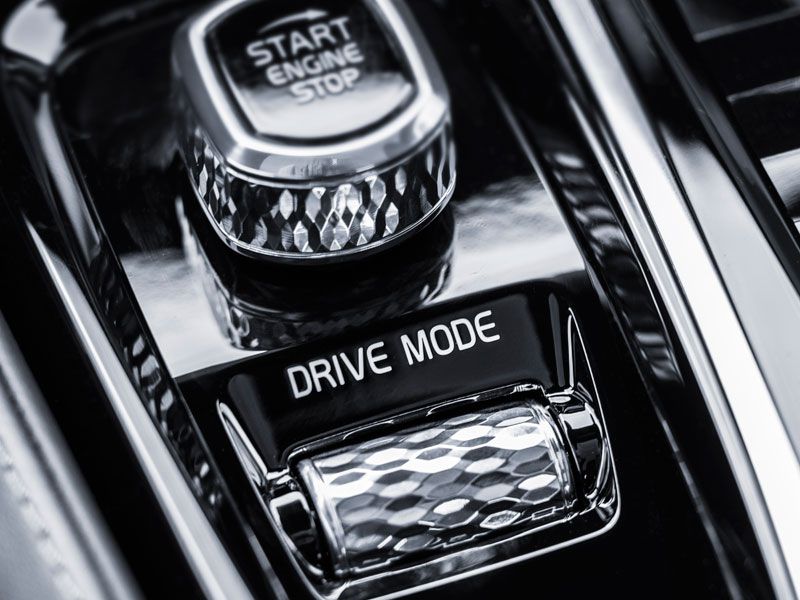
8. Steering is soft.
Not all of the 10 things you need to know about the 2020 Polestar 1 are positive. Admittedly, the car we drove was a pre-production model and what goes to buyers might end up being tuned a little finer. But we’re not fans of the steering system right now. We would have preferred more precision and feel.
The steering has electrical assistance, like most vehicles these days, bringing its own numbness issues. In the Polestar 1, a standard active lane-keeping assistance feature slows the responses considerably.
Hybrid mode is where it’s worst, with noticeable play either side of the straight-ahead position. Not so bad in Power mode, but we preferred to get into the touchscreen menus and turn the lane-keeping feature off.
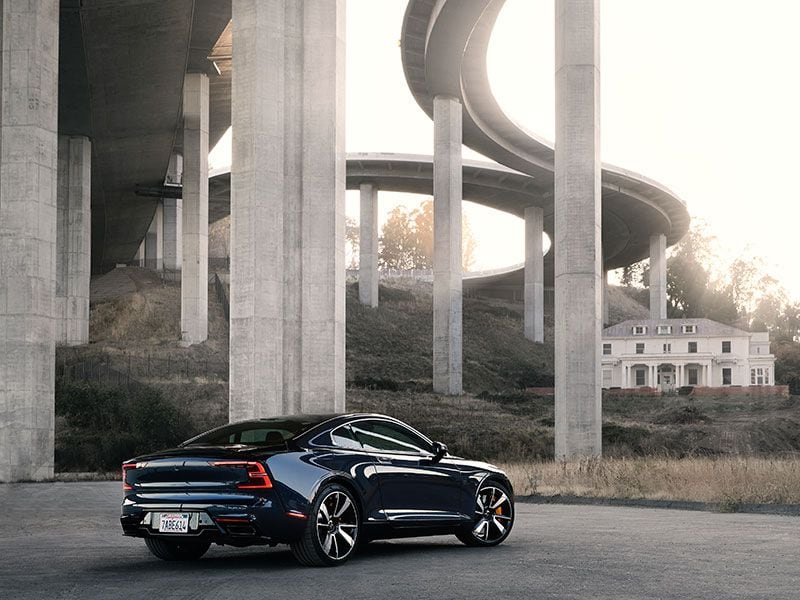
9. The Polestar 1's seats are sportier than most.
Volvo seats are traditionally some of the comfiest in the business. The ones in the Polestar 1 are different, but still good.
They’re sportier than usual, with plenty of bolstering for excellent lateral support through all those fast corners a Polestar 1 driver is going to take. Most of the adjustment is done via electric motors except for an extendable under-thigh support. It’s such a good thing to have, though, that we don’t mind moving it manually.
The Polestar 1 is a 2+2. The rear seats are best for kids or bags. Perhaps the latter, since trunk space only measures around 4.4 cubic feet. But the cabin is upholstered in fine black Nappa leather.
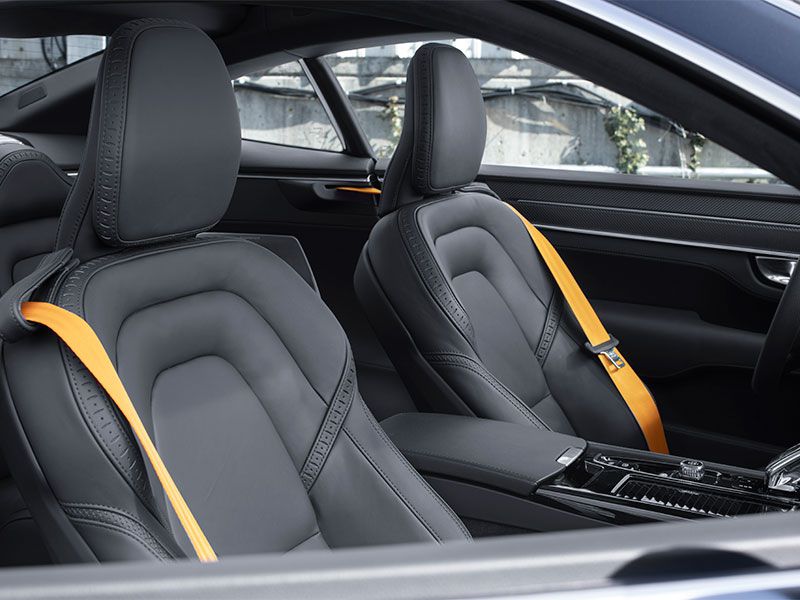
10. It isn't cheap.
This is perhaps the most crucial of the 10 things you need to know about the 2020 Polestar 1. It costs $156,500 including destination charges. There’s only one option: matte paint at $5,000.
Everything else is standard, which includes all the usual advanced safety features, smartphone integration, head-up display, 21-inch alloy wheels, crystal glass shift knob, and a fabulous Bowers & Wilkins audio system.
Polestar is setting up retail outlets in major cities, rather than making the car available through Volvo dealers (Polestar 2 and Polestar 3 vehicles are already in the works). Buyers can take delivery there or receive it at home. And only 1,500 will be made. So the Polestar 1 could become a collector’s car one day.
